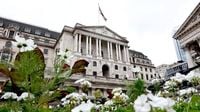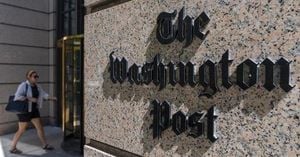On September 18, 2025, the Bank of England’s Monetary Policy Committee (MPC) made a decision that was widely anticipated by economists, market watchers, and households across the United Kingdom: it held the main interest rate steady at 4%. While the move itself came as no surprise, the nuances behind it—and the signals sent about the path ahead—have left plenty for analysts and everyday Britons alike to chew over.
The MPC, a panel of nine voting members, has been navigating a complicated economic landscape throughout 2025. According to BBC, two members of the committee voted to bring the rate down to 3.75%, but the majority opted to keep things unchanged, reflecting a cautious approach in the face of persistent inflation and economic uncertainty. Governor Andrew Bailey, who has become known for his measured tone, summed up the mood: “We are not out of the woods yet” on inflation, so “any future cuts will need to be made gradually and carefully.”
This mantra of “gradual and careful” has echoed through the Bank’s communications all year, and for good reason. Inflation, while no longer at the alarming highs seen in previous years, remains stubbornly above the Bank’s target, sitting at 3.8%. Food and drink costs, in particular, have been slow to ease, putting pressure on households and complicating the calculus for policymakers. As The Independent noted, higher inflation is a key reason for keeping rates elevated: it discourages excessive borrowing and spending, which in turn can help cool price increases.
But inflation isn’t the only factor on the Bank’s mind. Recent data has pointed to a cooling jobs market, with salary growth slowing and unemployment edging up over the course of the year. These trends, if they persist, could open the door to future rate cuts—though not just yet. As Laith Khalaf, head of investment analysis at AJ Bell, told The Independent, “The UK has an inflation problem, which is keeping the Bank of England in cautious mode on interest rates. While inflation is nowhere near as bad as it was, prices are still rising at an uncomfortable pace, so there is waning expectation of a rate cut at any point this year.”
Thomas Pugh, chief economist at RSM UK, echoed this sentiment, observing that while a September rate cut was “out of the question and one in November looks unlikely,” further cuts have been “delayed rather than cancelled.” The prevailing view among experts is that, barring a dramatic improvement in inflation or the labor market, the base rate is likely to remain at 4% for the remainder of the year—though a December cut to 3.75% is still on the table if conditions improve. As Khalaf put it, “the market currently only assigns a one in three chance to the possibility of an interest rate cut by the end of the year.”
The Bank’s caution is also shaped by events beyond the UK’s borders. Tariffs linked to U.S. politics—particularly those associated with Donald Trump—have introduced fresh uncertainty for British businesses, while higher labor costs and geopolitical tensions, including a spike in oil prices following Israel’s strike on Iran, have added further complications. These external shocks have made it even harder for the MPC to chart a clear course, reinforcing the need for a steady hand.
One of the more consequential decisions announced alongside the rate hold was a change in the Bank’s approach to quantitative tightening—the process of selling off government bonds accumulated during the financial crisis and the pandemic. As BBC reported, the Bank will slow the pace of these sales from £100 billion a year to £70 billion, focusing especially on reducing auctions of long-term government debt. Governor Bailey explained that this move aims to “wind down its crisis interventions while minimising the impact on gilt markets.”
This adjustment comes amid a notable increase in the effective interest rate charged for very long-term government debt. Part of this is due to global trends, but there’s also been a shift in the UK market itself, with traditional buyers like defined benefit pension funds scaling back their purchases. According to Bloomberg, gilt yields rose by about six basis points at the long end of the curve following the Bank’s announcement, reflecting market sensitivity to changes in supply and demand for government bonds.
The Bank’s decision to focus its bond sales on shorter-dated maturities is another sign of its desire to minimize disruption. By reducing the supply of longer-dated gilts, the Bank hopes to avoid pushing up borrowing costs for the government and businesses at a time when the economy remains subdued. Indeed, while the Bank noted slightly better-than-expected growth in the second quarter, it cautioned that the overall economic picture is still lackluster.
Financial markets reacted with a mix of relief and caution. The FTSE 100, the UK’s main stock index, bounced throughout the day but looked set to close in positive territory, albeit lagging behind more tech-heavy European and U.S. indices. The pound, meanwhile, slipped below $1.36 after a strong U.S. jobs report boosted the dollar, highlighting the interconnectedness of global financial markets.
On the corporate front, September 18 saw a flurry of activity. Next, the retail giant, reported an increase in profits driven by robust overseas sales, though it warned that sales would slow in the second half of the year. Pets at Home’s shares tumbled following a cut in guidance and news that its CEO would step down. Meanwhile, Jupiter, Renishaw, and Spire Healthcare all saw their share prices rise. In the technology space, Octopus Energy announced plans to spin off its AI arm, Kraken, into a standalone company potentially worth up to $14 billion, with a possible London listing. Palantir inked a deal with the UK military, and Deliveroo’s founder revealed plans to step down after the company is acquired by DoorDash.
Amid all this, consumer sentiment has taken a hit, with many Britons feeling the pinch of persistent inflation and uncertain about the future. For those with mortgages, the Bank’s decision means that borrowing costs will remain steady for now, though future changes are likely to be gradual. Savers, on the other hand, may want to keep an eye on the best available rates or consider longer-term investment options, as the path for interest rates remains clouded by economic and geopolitical uncertainties.
As the Bank of England continues to stress, the journey back to normality is far from over. Decisions will be made “gradually and carefully,” with each move weighed against a backdrop of shifting data and global events. For now, the message is clear: patience and prudence remain the order of the day.





